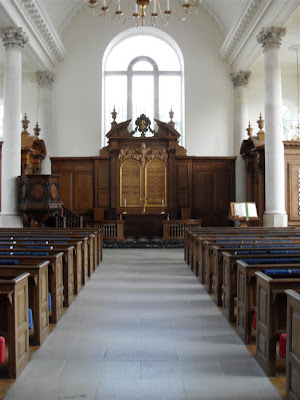Just 30 miles from Columbia, Missouri, where daughter #2 goes to university, is the charming small town of Fulton, Missouri. It looks like the kind of community that would be terrific for raising children. It's small enough to be safe for riding bikes all over town but with intellectual stimulation for the community from the local college.
It was here that the local institution of higher learning, Westminster College, took advantage of having a Missouri native son in the White House, to see if they could finagle Winston Churchill as a speaker for their annual address on international relations. President Harry Truman wrote a handwritten note on the bottom of the invitation telling Mr. Churchill that he would introduce him. Winston promptly accepted.
In 1946, in this small town in Fulton, Missouri, Winston Churchill named and described what was happening to Eastern and Central Europe after WWII. It was forever to be known as the "Iron Curtain" speech.




 This is the actual hard copy of Winston Churchill's speech describing "the iron curtain" that had descended over the ancient capitals of Central and Eastern Europe. It's impossible for me to look at the page without reading it mentally in my best Winston Churchill imitation. How about you?
This is the actual hard copy of Winston Churchill's speech describing "the iron curtain" that had descended over the ancient capitals of Central and Eastern Europe. It's impossible for me to look at the page without reading it mentally in my best Winston Churchill imitation. How about you? Winston Churchill's life experience is shared through the exhibits. A recurring theme is the ability to foresee what would happen before others could.
Winston Churchill's life experience is shared through the exhibits. A recurring theme is the ability to foresee what would happen before others could.
The exhibit makes the point again and again that no Czech was present
when the Munich agreement was negotiated
between Neville Chamberlain and Adolf Hitler.
Which immediately begs the question: what if one had been?
Would the outcome have been different?
Or would that poor Czech and his descendants have had to live with that?
What do you think?
It goes without saying, but I will say it anyway --
this was not the West's finest hour.

"Those who do not remember history are condemned to repeat it."
The museum described that when Churchill assumed leadership of his country,
it was exhausted by war and broke.
He had to decide if he could afford troops on the ground in Iraq
or mere influence. He accepted reality and chose influence.
To commemorate this important speech, Westminster College administration and trustees, pursued importing and reassembling an English church designed by the great Christopher Wren to memorialize the wisdom of Winston Churchill. There were so many churches damaged in the Blitz that the English could not restore them all and were happy to let this one go.
The stones, while marked, became all jumbled when they were used as ballast in the ship's hold coming over (using them as ballast lowered the shipping cost). Then they were jumbled a second time when they were transported across country. Walt's uncle was the lead stone mason on the project. He had the job of puzzling which stone went where.






Touring this site takes about three hours. Admission is $6. I would like to recommend a lively restaurant downtown with great value. A local told me about it. It's called Bek's.
















































 Who links to me?
Who links to me?
